A horse needs to be loose, supple, forward, straight, engaged with good balance and impulsion, to start collected work. These qualities are mostly developed by lateral work.
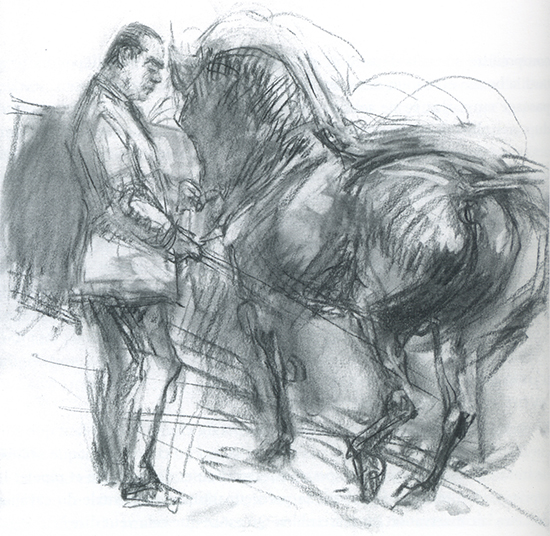 The illustrations are, of Miguel’s early teacher, Nuno Olivera, and by Jean Louis Sauvat
The illustrations are, of Miguel’s early teacher, Nuno Olivera, and by Jean Louis Sauvat
Miguel’s pupil, Grace Kay is the rider
I normally start lateral work very early in the training, even before the horse is ridden.
When a horse knows to work on the lunge fitted with snaffle bridle, cavesson, saddle and side reins, I begin to teach the first steps of lateral work from the ground. For example, starting on the left rein, I hold the lunge with my left hand about 10 to 15 cm away from the attachment of the cavesson and in my right hand, I hold a dressage whip pointed towards the middle of the horse’s thigh where I touch gently in order to make the horse move away from the whip. If the horse tries to move forward only, which he normally does, I prevent him with the cavesson, and I touch again with the whip. When confirmed in this work, this exercise can be done by holding the reins.
It is important that the horse move forward and sideways in all of this lateral work in hand. To do this, I advise the handler to always walk backwards in order not to move against the horse. I do this work to both sides, changing from one to the other frequently.
The first lateral lesson that I give under saddle is the shoulder-in.
Normally I do not use leg yielding because I do not agree with having lateral movement without bend.
I start at the walk by doing a small circle around my inside leg, it is a type of shoulder-in on a two-to-three metre circle. It is very important in this work to have the horse moving more forward than sideways.
I have to be able to see the outside shoulder moving forward, never sideways. I will use this exercise all the time at the beginning of each session to do three things: to put the horse around my inside leg, on my outside rein, and on the bit.
Normally, after the previous work in hand, the horse finds this exercise very easy to learn and to execute.
Before asking for lateral work at the trot, I would confirm the transitions upward and downward within the trot.
I go from working trot sitting to an increasing trot rising for several strides and then back to working trot sitting, alternating from one to the other frequently. I also make sure the transitions from trot to walk and back to trot are well established. When the horse is ready to begin lateral work at the trot I have the horse on a 20 metre circle in working trot sitting. I increase the bend, and with my inside leg on the girth, I ask for a few strides of shoulder-in. When he obeys, I rise and lengthen the trot while maintaining the circle, and reward with a pat and use of the voice.
Ten metre circles, twenty metre circles, working trot, increasing trot, shoulder in, that’s the cocktail that makes up suppleness”
It is very important to keep the circle the correct size in order to prevent the horse from drifting out. Design your circle well, be very accurate with the design of your circle.
After one or two circles, of rising lengthened trot I repeat the exercise. If the horse is responding well I can begin asking more frequently, and then later, increase the number of strides in the shoulder-in position. The progression from this, is from the 20 metre circle to a10 metre circle, in order to confirm the influence of my outside leg I push with my inside leg to the outside rein, controlling the hind quarters with the outside leg.
When the horse is established in this work, I start by going from the shoulder-in on the circle to the counter-shoulder-in along the wall, which improves again the suppleness, obedience and engagement in this phase of training.
I finish the work on the shoulder-in on the circle, and of the counter shoulder-in by going to a rising working trot on a 20 metre circle, with lowered neck, in other words by riding round and down. When the horse is established in these exercises, he is ready to start learning the shoulder-in along the wall.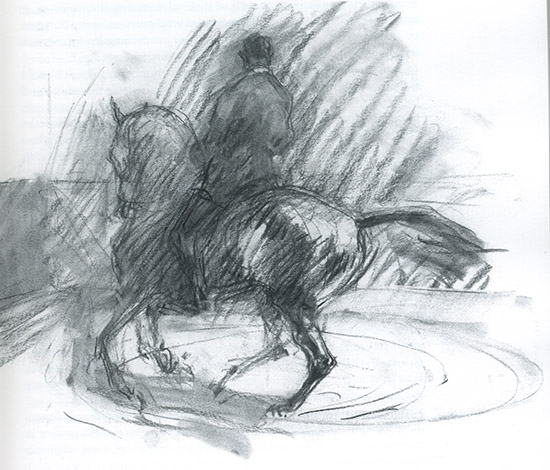
“The horse should not stretch the neck down, the horse should arch and lengthen the topline of the neck.”
In preparation for shoulder-in along the wall I would ask the horse for some transitions on a 20 metre circle. Transitions from working trot sitting to medium trot rising and back again to working trot sitting as well as from trot to walk and back to trot again. This ensures that I have impulsion and obedience to the half-halt, with a firm, but soft contact.
“You have to put his neck where you feel more swing in his back. Don’t block with your hands, oblige him to give more. Give and take, keep the poll flexed, and then ask for shoulder in.”
Having completed this initial work I then progress to a 10m circle on the second corner of the short wall and on returning to the corner I keep the bend with my inside leg and rein, controlling the bend with my outside rein, I bring the shoulders a little bit in, and with both legs I keep the movement forward.
In this position of shoulder-fore, I slide along the wall for a few strides. In order to reward good strides I put him on a10 metre circle, I pat and walk.
When the horse is confident in this exercise, I first increase the number of strides and when I feel he can do this without loss of balance, I can then increase the angle off the wall to the shoulder-in position.
“We use exercises to make the horse submissive and light and to help him find self carriage.”
Of course we must remember that all exercises are only useful if they are executed correctly. We must feel that the shoulder-in makes the horse improve his suppleness, engagement, impulsion, and gives us some collection. I know that my horse is correct when it is able to keep the same rhythm, the same contact, not trying to change its outline or balance.
As always, when we teach something new to the horse, we have to remember the old saying, ask often – expect little, and reward generously. In reference to the shoulder-in this means that at the beginning, what is important is to have good strides of shoulder-in. We should not ask too many, but we should ask often.
When we have the horse doing correctly the shoulder-in, we have the horse ready to do the more advanced lateral work. In the more advanced work we aim to develop more collection.
Looking for a special stallion? Consider Floriscount – go to www.ihb.com.au



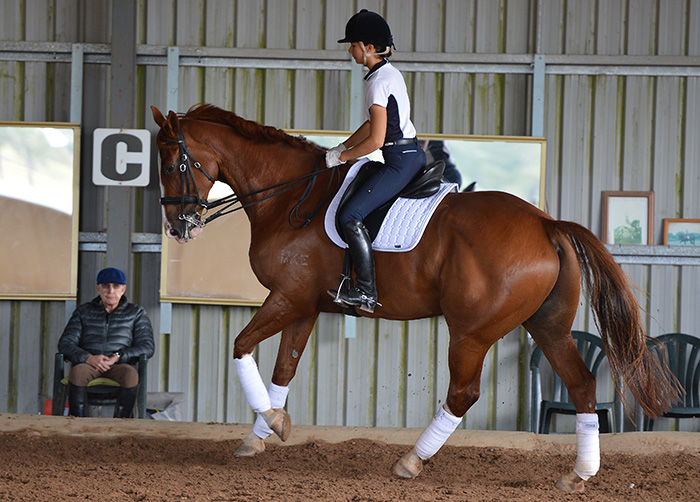
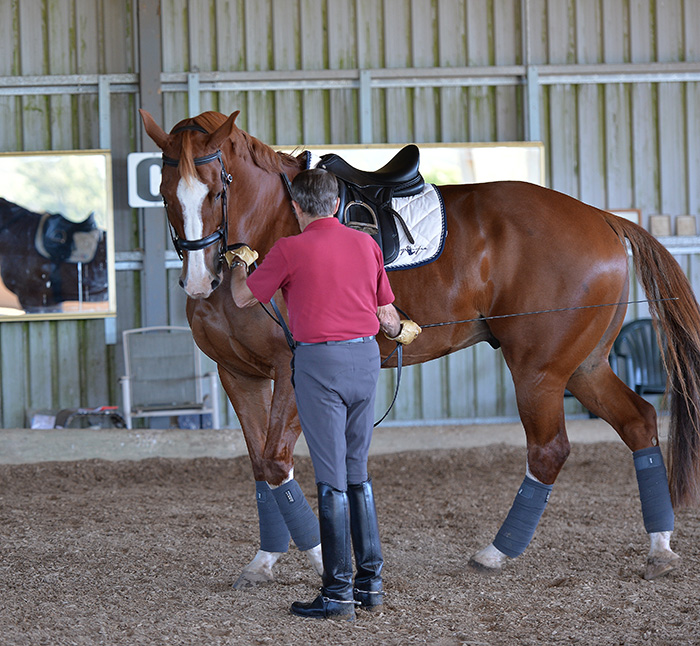
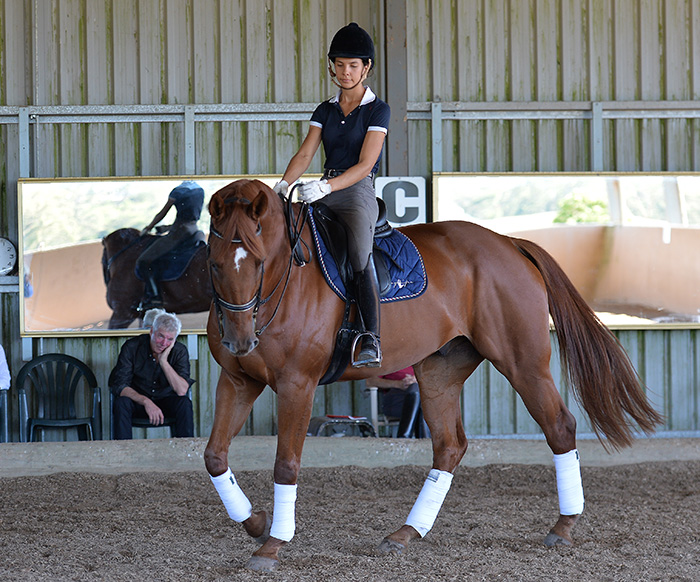
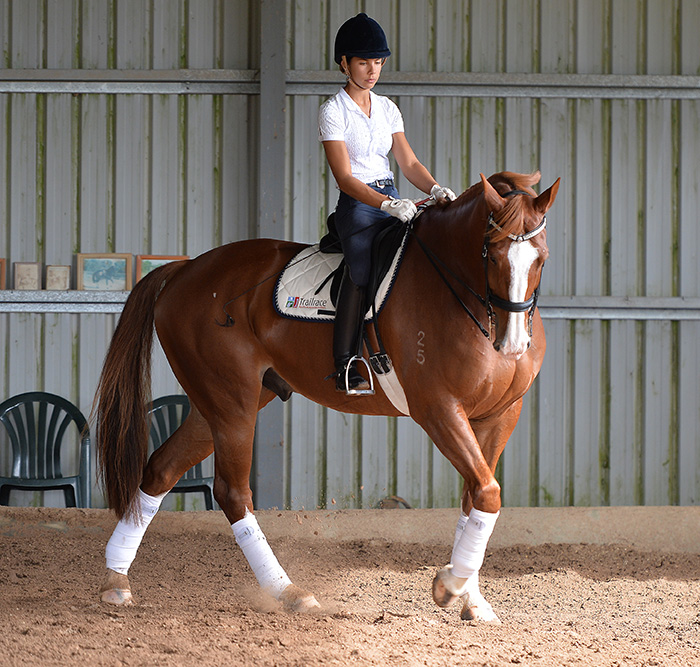
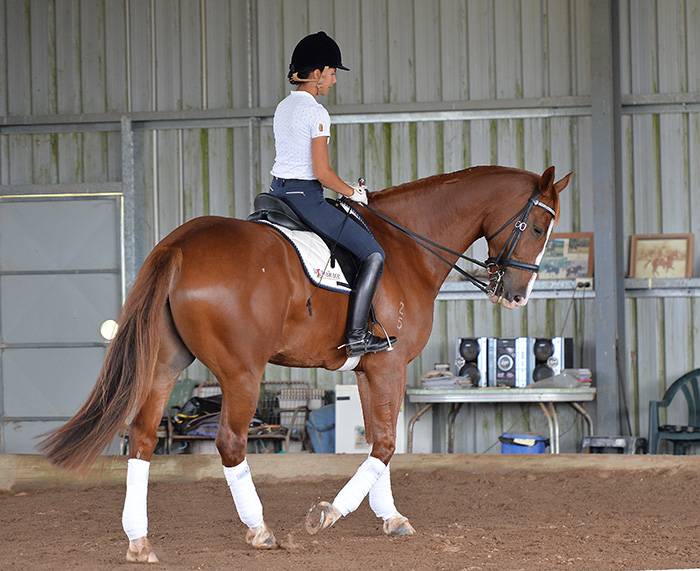
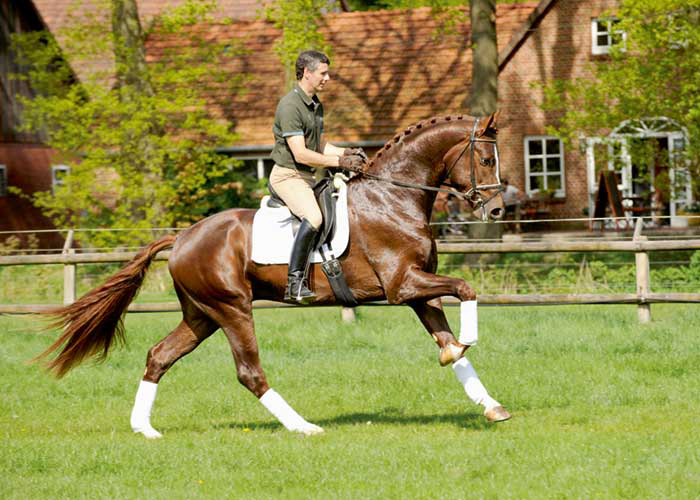
Very good article & informative.